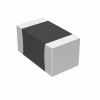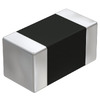- Deutsch
-
EnglishDeutschItaliaFrançais日本語한국의русскийSvenskaNederlandespañolPortuguêspolskiSuomiGaeilgeSlovenskáSlovenijaČeštinaMelayuMagyarországHrvatskaDanskromânescIndonesiaΕλλάδαБългарски езикAfrikaansIsiXhosaisiZululietuviųMaoriKongeriketМонголулсO'zbekTiếng ViệtहिंदीاردوKurdîCatalàBosnaEuskeraالعربيةفارسیCorsaChicheŵaעִבְרִיתLatviešuHausaБеларусьአማርኛRepublika e ShqipërisëEesti Vabariikíslenskaမြန်မာМакедонскиLëtzebuergeschსაქართველოCambodiaPilipinoAzərbaycanພາສາລາວবাংলা ভাষারپښتوmalaɡasʲКыргыз тилиAyitiҚазақшаSamoaසිංහලภาษาไทยУкраїнаKiswahiliCрпскиGalegoनेपालीSesothoТоҷикӣTürk diliગુજરાતીಕನ್ನಡkannaḍaमराठी
Verständnis der Rolle eines Null-Ohm-Widerstands im Schaltungsdesign
- 2024/10/15
- 97
Katalog
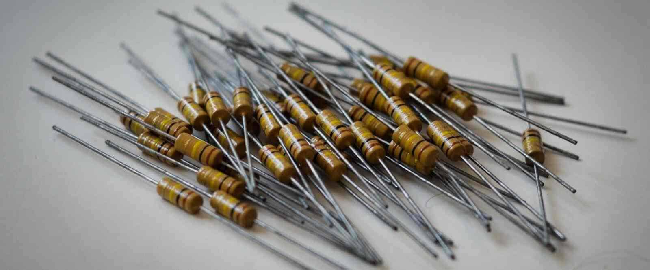
Rolle und Auswirkungen eines Null-Ohm-Widerstands
PCB -Design und Debugging
Ein Null-Ohm-Widerstand fungiert als Pullover auf einer gedruckten Leiterplatte (PCB), wodurch Debugging- und Designänderungen erleichtert werden.Während ein Draht verwendet werden könnte, werden Widerstände bevorzugt, da sie nahtlos in automatisierte Montageprozesse passen.
Null-Ohm-Widerstände ermöglichen auch zukünftige Designänderungen.Sie dienen als Platzhalter, die später gegen Komponenten mit bestimmten Werten ausgetauscht werden können, ohne das Layout zu ändern.Wenn beispielsweise eine Signallinie aufgrund eines Konstruktionsfehlers umgeleitet wird, bietet der Widerstand eine einfache und saubere Lösung.
Schaltungsanpassung und -Test
Null-Ohm-Widerstände helfen bei der Anpassung von Schaltkreisen.Wenn ein Abschnitt einer Schaltung unnötig wird, kann der Widerstand an Ort und Stelle bleiben, ohne das Gesamtdesign zu stören.Sie helfen auch beim Testen: Indem Sie den Widerstand entfernen und einen Amperemeter hinzufügen, können Sie den Strom in bestimmten Teilen der Schaltung messen.
Diese Technik hilft zu bewerten, wie Schaltkreise unter verschiedenen Bedingungen wie unterschiedliche Spannungsstufen abschneiden und den Testprozess vereinfachen.
Hochfrequenzanwendungen und EMC-Überlegungen
In hochfrequenten Anwendungen spielen Null-Ohm-Widerstände eine Rolle bei der Steuerung der elektromagnetischen Kompatibilität (EMC).Sie werden verwendet, um die Erdung zu bewältigen und die Störungen aus unterschiedlichen Erdungspotentialen zu verringern.
Durch die Ermöglichung von Einzelpunkten helfen sie, Rauschen zu verhindern und die Signalintegrität zu gewährleisten, was sie für eine zuverlässige Systemleistung hervorragend macht, insbesondere bei empfindlichen Signalanwendungen.
Maximale Stromhandhabung von Null-Ohm-Widerständen
Null-Ohm-Widerstände wirken als einfache Springer, um die Schaltkreise zu steuern und die PCB-Baugruppe zu vereinfachen.Ihr Hauptvorteil ist, dass sie flexibles Routing ermöglichen, ohne größere Layoutänderungen zu benötigen.Der Strom, den ein Null-Ohm-Widerstand verarbeiten kann, hängt von seiner Paketbewertung und seinem internen Widerstand ab.
Wie wirkt sich die Paketbewertung auf die aktuelle Handhabung aus?
Die Paketbewertung enthält zusammen mit dem internen Widerstand des Widerstands, wie viel Strom sie sicher tragen kann, ohne Schaden oder Leistungsprobleme zu verursachen.
Null-Ohm-Widerstände haben normalerweise einen Widerstand von etwa 50 Milliohm bei einer Toleranz von ± 5%.Der maximale Strom für gemeinsame Paketgrößen ist:
• 0402 Paket, 1/16W: 1.118a
• 0603 Paket, 1/8W: 1,58a
• 0805 Paket, 1/4W: 2.236a
Die Leistungsbewertung jeder Paketgröße setzt die Grenze für den Strom fest, den sie verarbeiten kann, so
Wärmeissipation betrifft, wie viel Strom ein Null-Ohm-Widerstand verarbeiten kann.Ein gutes thermisches Management im PCB -Design ist erforderlich, um Überhitzung und Misserfolg zu verhindern.Der richtige Abstand und das Hinzufügen von thermischen VIAS können die Wärmeableitung verbessern und die Zuverlässigkeit des Widerstands erhöhen.
Warum einen Null-Ohm-Widerstand in einer Schaltung verwenden?
Analog- und digitale Gründe anschließen
Um Probleme wie schwimmende Boden und statische Stromansammlung zu vermeiden, müssen alle Gründe mit der Erde verbunden sein.Das direkte Verschmelzen von analogen und digitalen Gründen kann jedoch Störungen verursachen.Ein Null-Ohm-Widerstand kann verschiedene Bodenpunkte anschließen und gleichzeitig das Bodenpotential stabil halten, eine gängige Praxis bei fortschrittlichen elektronischen Konstruktionen zur Verbesserung der Zuverlässigkeit.
Gewährleistung kurzer Signalrückgabepfade
Wenn eine Erdungsebene unterbrochen wird, können Null-Ohm-Widerstände den Signalrückgabeweg wiederherstellen, die Interferenz reduzieren und die Signalintegrität aufrechterhalten.Diese Methode ist besonders nützlich für hochfrequente Schaltungen, bei denen die Rauschreduktion analytisch ist.
Vereinfachung der Schaltungskonfiguration
Null-Ohm-Widerstände können Springer und Dip-Schalter ersetzen, die anfällig für Missverständnisse sind.Durch die Verwendung von Null-OHM-Widerständen ist die Schaltung leichter aufrechtzuerhalten und führt bei hohen Frequenzen besser ab, da unbenutzte Springer als unbeabsichtigte Antennen wirken können.
Verwandter Blog
-
Netzteilspannung Abkürzung: VCC VDD VEE VSS GND

2024/06/6
Im modernen elektronischen Schaltungsdesign, Verständnis der Abkürzungen der Stromversorgungsspannung (wie VCC, VDD, VEE, VSS, GND).Diese Abkürzung... -
Ein Überblick über TTL- und CMOS -ICs und wie Sie zwischen ihnen wählen

2024/04/13
In diesem Artikel werfen wir einen detaillierten Blick auf zwei wichtige elektronische Technologien, komplementäre Metaloxid-Halbleiter (CMOS) und Tr... -
Verständnis des C1815 -Transistors: Pinouts, Schaltungssymbole, Anwendungsschaltungen
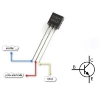
2023/12/20
Welche Art von Röhre ist der C1815?C1815 Triode PinoutC1815 ModellzeichnungC1815 -ParameterC1815 EigenschaftenAnwendung von C1815 Der C1815 -Transist... -
Verschiedene Arten von Sicherungen und Anwendungen

2024/04/18
Sicherungen sind wesentliche Komponenten in modernen elektrischen Systemen und fungieren als entscheidende Beschützer vor Überstrom.Sie arbeiten, in... -
LR44 -Batterien: LR44 -Batterieäquivalente und LR44 -Batterieersatz
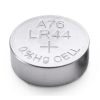
2024/01/24
In einem sich schnell entwickelnden technologischen Gebiet, in dem die Größe der elektronischen Geräte weiter schrumpfen und dennoch alltäglicher ... -
Grundkenntnisse über Sicherungen: Merkmale, Arbeitsprinzipien, Typen und wie man richtig auswählt
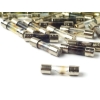
2024/04/10
Sicherungen schützen Schaltungen vor Schäden aufgrund von Überlastung oder Kurzstrecken.Dieses einfache, aber geniale Gerät basiert auf einem leic... -
Leitfaden zu Buck-, Boost- und Buck-Boost-Konverter
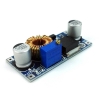
2023/12/21
Was ist ein Buck -Konverter?Wie funktioniert ein Buck Converter?Was ist ein Boost -Konverter?Wie funktioniert ein Boost -Konverter?Was ist ein Auftrie... -
Beschreiben Sie kurz die Spezifikationen, Verpackungen, das Arbeitsprinzip, die Vorteile und die Umweltauswirkungen von Lithium-Ionen-Batterien
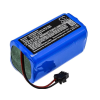
2024/03/20
Seit der Einführung von wiederaufladbaren Blei-Säure-Batterien im Jahr 1859 wurden sie allmählich in den Gewebe des technologischen Fortschritts ei... -
Transistor (BJT und MOSFET) Arbeitsprinzipien
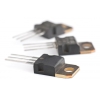
2023/12/20
Arbeitsprinzip des bipolaren Junction -Transistors (BJT)Auswahl der KomponentenwerteWie wählen Sie einen Transistor?Arbeitsprinzip von MOSFETWie scha... -
Beherrschen analoge und digitale Schaltungen: Ein Anfängerführer

2023/12/20
Definition und Eigenschaften von analogen Schaltungen und digitalen SchaltungenDer Unterschied zwischen analogen Schaltungen und digitalen Schaltungen... -
Grunde elektronische Grundkomponenten verstehen - Widerstände, Kondensatoren, Dioden, Transistoren, Induktoren und digitale Logik -Tore
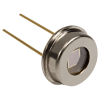
2024/04/13
Elektronische Komponenten sind der Eckpfeiler des Bauens und der Optimierung elektronischer Schaltkreise.Von gewöhnlichen Haushaltsgeräten bis hin z... -
Eine vollständige Liste von Testmethoden für verschiedene Transistoren
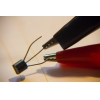
2023/12/20
Der Transistor wurde von John Bardeen, William Shockley und Walter Brattain erfunden.Es handelt sich um ein Kollektor-, Emitter- und Basis-Drei-termin... -
Transistor umfassender Leitfaden

2023/12/20
1. Was ist ein Transistor?2. Wie funktioniert ein Transistor?3. Vorteile von Transistoren4. Arten von Transistoren5.faq 1. Was ist ein Transistor? Ein...
Heiße Teile
- 1812WC681MATME
- GRM32ND70J226ME19L
- GRM0336R1E5R9CD01D
- TAJD226K020HNJ
- ASTMLPE-125.000MHZ-LJ-E-T
- DMG3418L-7
- B140WS-7
- TSC2046EIPWR
- EPXA4F672C1
- STM8S105S4T6CTR
- EL1508CM
- AD8310ARM
- MC13892VLR2
- MIC2168YMM
- ISL78200AVEZ
- RC0805FR-07102KL
- AD5662BRJZ-2REEL7
- SN65HVD37D
- MAX250CSD+T
- TPS2321IPW
- ACPL-072L-000E
- V150B24C150BG
- VI-B64-EV
- 6MBI25F-060
- 7MBR25NE060
- DBS400B12
- MCC21-14I08B
- IP90C27-LC
- MST6M58FQP-LF
- ST62T80BQ6
- HI3110ERQCV401000
- TPS61240YFF
- GM6015-LF-BD
- UPC3220GR-E1-A
- MB90487APF-G-148-BNDE1
- PC82535MDE/SL9QN
- miniSMDC050F
- LTC3725EMSE
- TS4962IJT
- T491B476K010ZT7005ZV18
- E2009NLT
- GD82559ER-SL3DG
- K9F1208U0C-PIB0000
- LC35256AM-10
- MAX17841GUE/V
- NS32FX210V
- UPD784036GK-512
- EDE2516ABBG-6E-E

